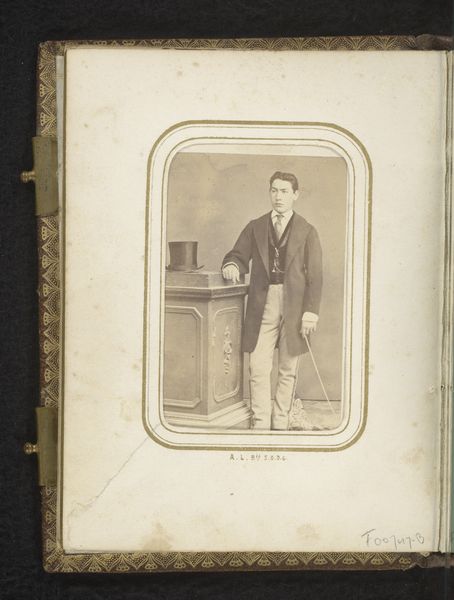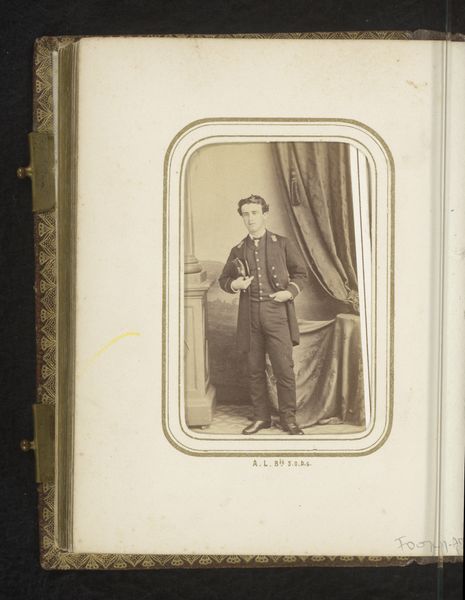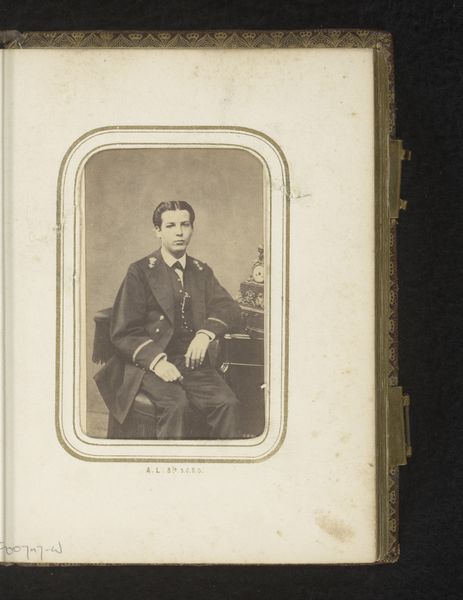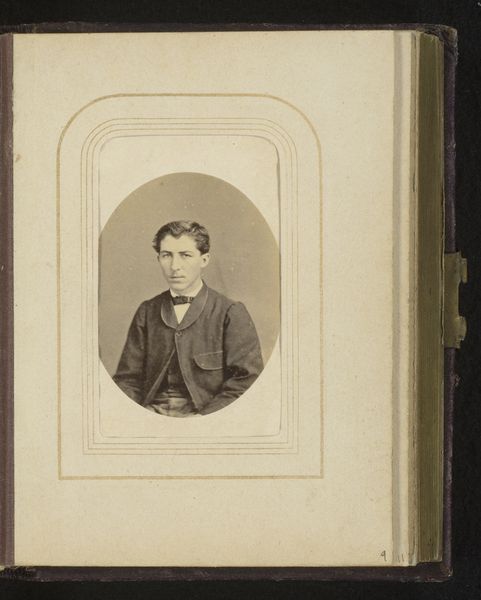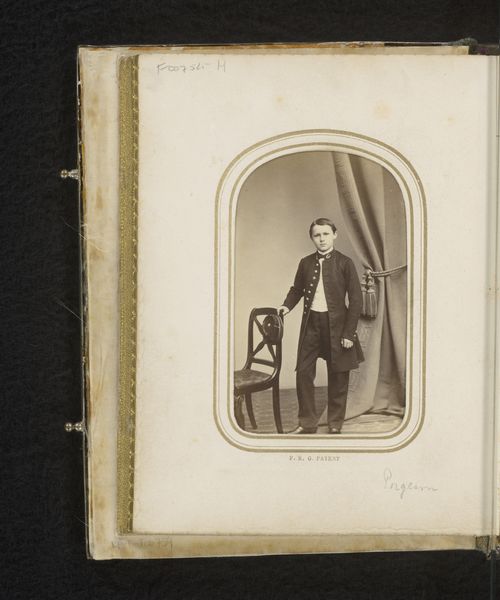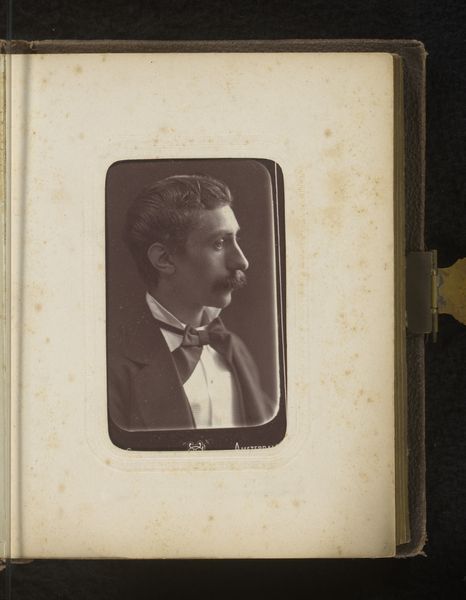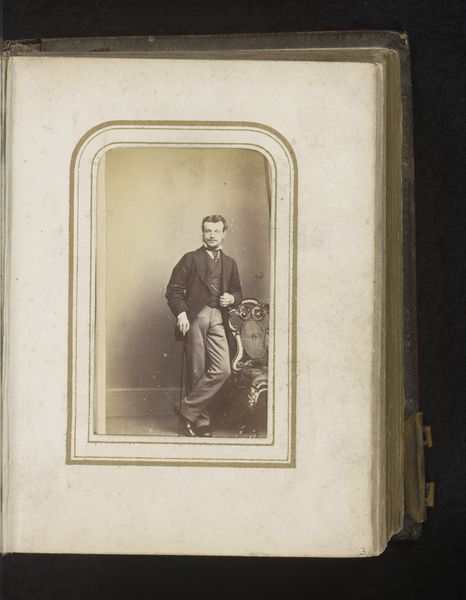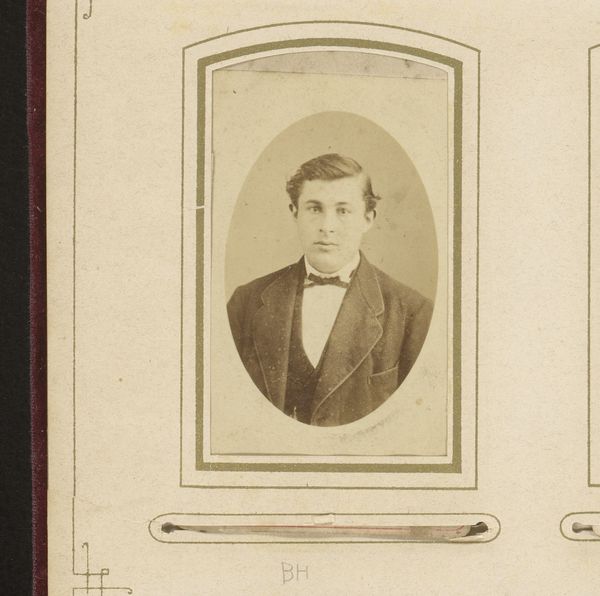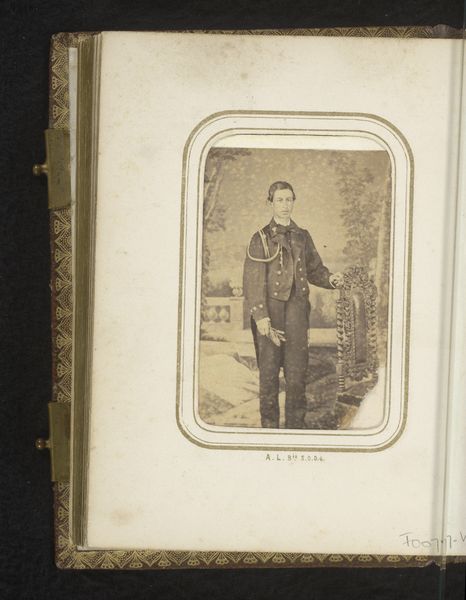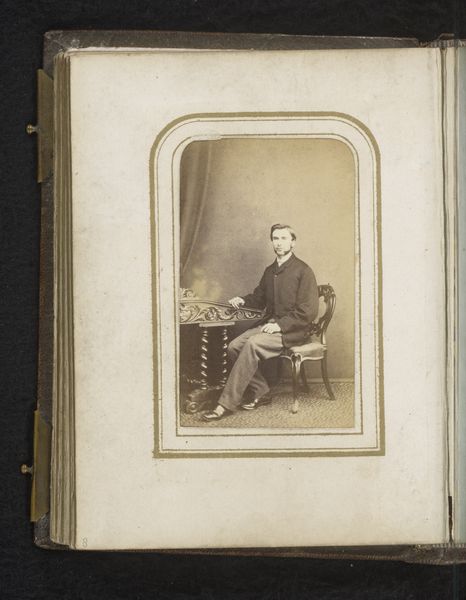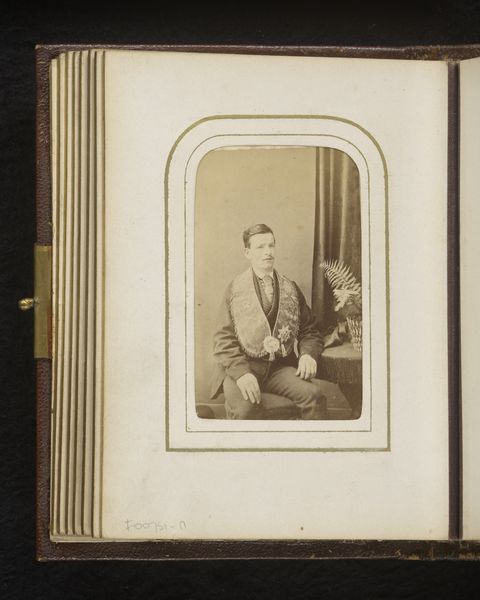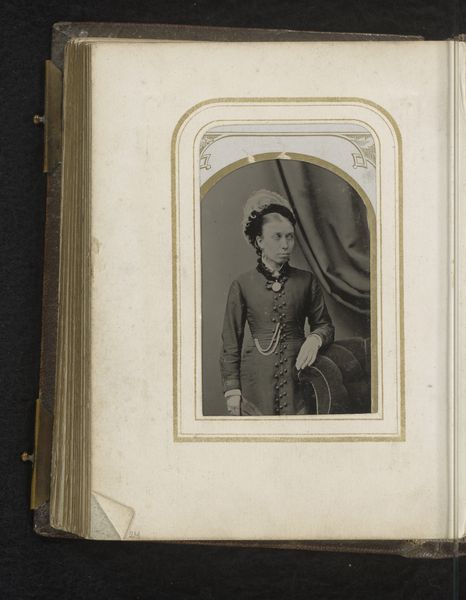
photography
#
portrait
#
photography
Dimensions: height 106 mm, width 61 mm
Copyright: Rijks Museum: Open Domain
Editor: This is "Portret van een zittende jongeman in uniform" (Portrait of a Seated Young Man in Uniform), made between 1860 and 1880 by Stahl & Wahnschaffe. It’s a photograph, presented in an elaborate frame within an album page. The sepia tones give it a melancholic air. I'm curious about the production of photographic portraits at this time. What strikes you about it? Curator: What strikes me is the level of material consumption evident here. Consider the context. We have a photograph, a relatively new technology at the time, democratizing portraiture, but encased within a highly crafted and costly presentation. The album itself, with its decorated binding and individual frame, signals luxury and exclusivity. It speaks volumes about the sitter's social standing, and the aspirations of the photographer and their client. It's less about capturing likeness and more about presenting a particular material reality. Editor: So, the album is just as important as the photo itself? Curator: Precisely! Think about the labour involved: from the chemical processes of the photographic development to the intricate craftsmanship of the album. The materials themselves – the paper, the chemicals, the binding – all these are products of industrial processes and colonial exploitation. They invite us to investigate the entire system of production and consumption inherent in even what seems like a simple portrait. Who benefits from this? Whose labour is hidden? Editor: I never thought about it like that, focusing on what’s behind the scenes and the materials instead of just the sitter's identity. Curator: Exactly. This isn't just a photograph, it's a complex object, deeply embedded within the socio-economic realities of its time. Editor: This makes me want to research how photography changed the industry of portrait-making. Curator: And that is exactly how materiality can provide entry point into deeper understanding of art’s function in society.
Comments
No comments
Be the first to comment and join the conversation on the ultimate creative platform.
